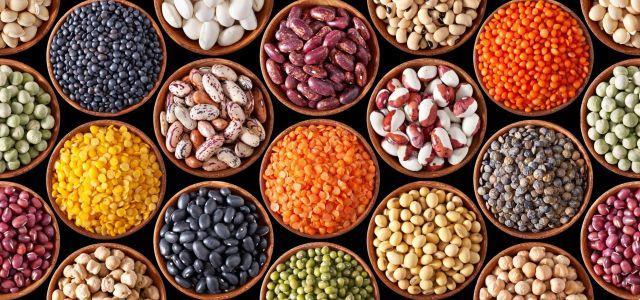
Some curiosities about legumes
The legumes are i seeds contained in the pod and their many varieties make them an ideal food in the fight against obesity, diabetes, coronary heart disease and cancer.
Rich in soluble fiber, legumes slow down the gastric emptying times, favoring the sense of satiety and reducing the absorption of sugar and cholesterol. The daily requirement of fiber, for a healthy person, is 30 g: a portion of 100 g of chickpeas contains 14 g, of lentils 17g up to beans with 21g.
They are low in fat, with a variable content between 1.5 and 5.5%. The only exception is peanuts which contain 50%! Legume fats are polyunsaturated and they do not have the negative effects of the fats present in meat. They contain good amounts of B vitamins, iron e potassium.
Legumes are plastic foods (constructive): fresh, but above all dry, legumes are excellent sources of protein: dried ones contain in fact a quantity approximately equal to, or even higher than that of meat (even if the quality is lower) and double that of cereals. Although of plant origin, these proteins provide some essential amino acids (such as lysine, threonine, valine and tryptophan) in a fair amount, higher than that present in wheat, corn and rice proteins.
The latter, on the other hand, contain good doses of sulfur amino acids, which are instead scarce in legumes.
It is common notion that the consumption of significant quantities of legumes causes the development of intestinal gas (flatulence) and other digestive disorders.
The cause is to be found in the presence in the legumes themselves of particular carbohydrates (raffinose, stachyose and verbascose) which are not removed by cooking and cannot be digested, as our intestine lacks the specific enzymes capable of attacking those molecules, which therefore they are degraded by the intestinal bacterial flora, with the production of gas. Legumes should be cooked for a long time, as they contain antidigestive factors (antitryptic factors) that prevent the digestion of the raw product. However, heat destroys these factors making legumes digestible and assimilable.
Canned legumes are not bad but ... Attention!
Since these are foods stored for a long time in containers generally made of tin, however, it is good to pay attention when consuming canned legumes.
The cans that are usually used to preserve legumes are certainly a limitation as they often contain toxic substances, harmful to health, which can be released into the food. A typical example is given by the bisphenol A, more commonly known as BPA, a chemical typically used to make plastics and resins. For this reason I recommend, in cases where the time available is short, of prefer those in glass jars or better yet to cook them at home and store them in glass.
Secondly canned legumes often contain various additives, such as monosodium glutamate, a substance generally used to enhance the taste and flavor of canned foods.
Absolutely not to forget that canned legumes they also contain a lot of salt which, in daily nutrition, must never be excessive since in high quantities it can lead to serious consequences such as a increased blood pressure, kidney problems and also to the cardiovascular system.
Not everyone knows that sugar can also be added with the aim of reducing the bitter taste and make legumes sweeter, especially peas.
Again, an excess in the daily diet can lead to adverse health effects.
Finally, to recognize the quality of a canned legume, I suggest looking at the governing liquid, once drained: if this is not very clear and contains various skins and residues, it certainly indicates inadequate upstream processing.
In any case, once purchased, always better rinse the legumes under running water, this is to best free them from the preserving liquid - generally water, but which is certainly good to eliminate as it has been closed for a long period of time - and to eliminate any trace of salt and sugar in the best possible way.
Once the can is opened, attention must be paid to storage, if they are not consumed immediately. The suggestion I say transfer leftovers to an airtight container, to be kept in the refrigerator, but only for a few days (however, depending on what is written on the label after opening the product).


























